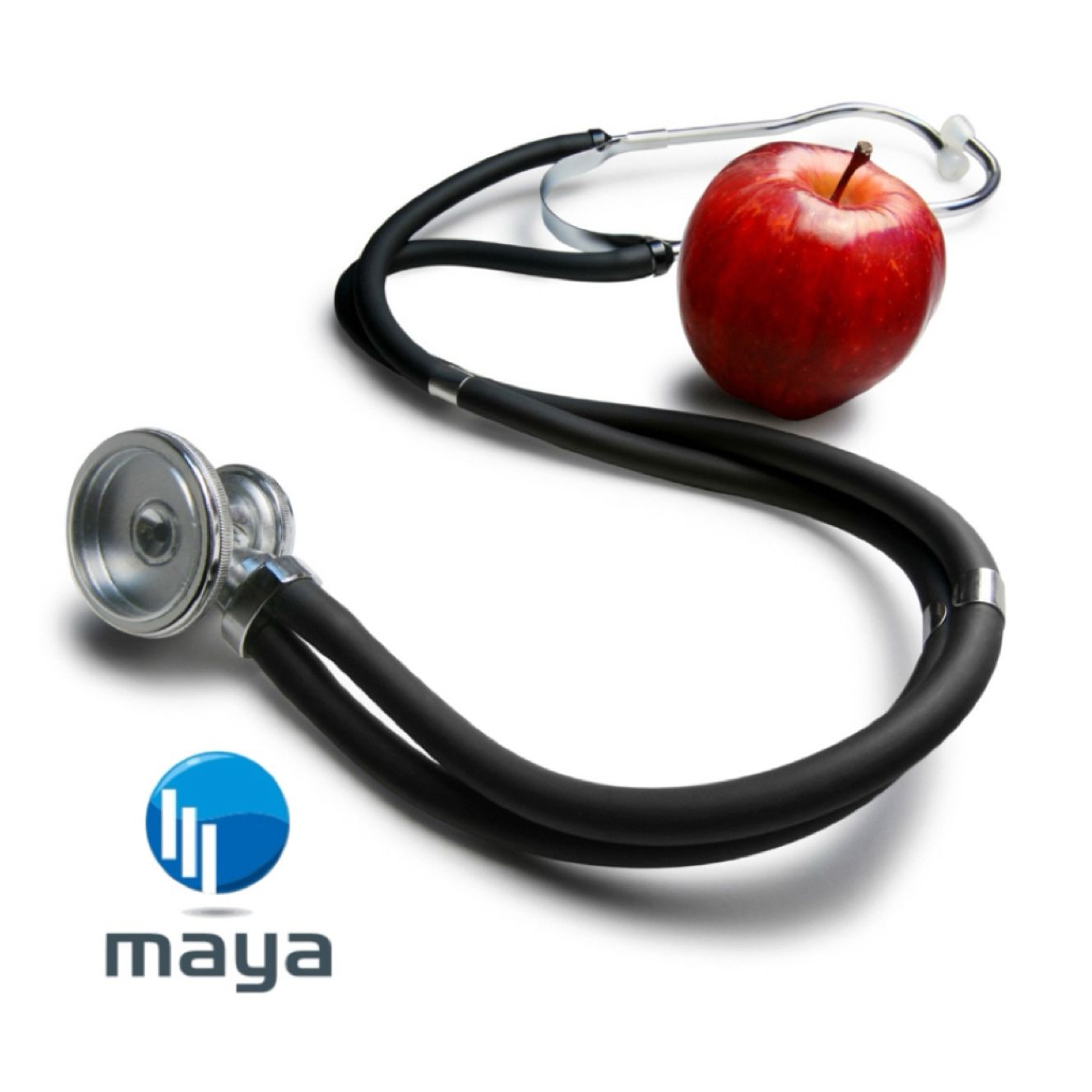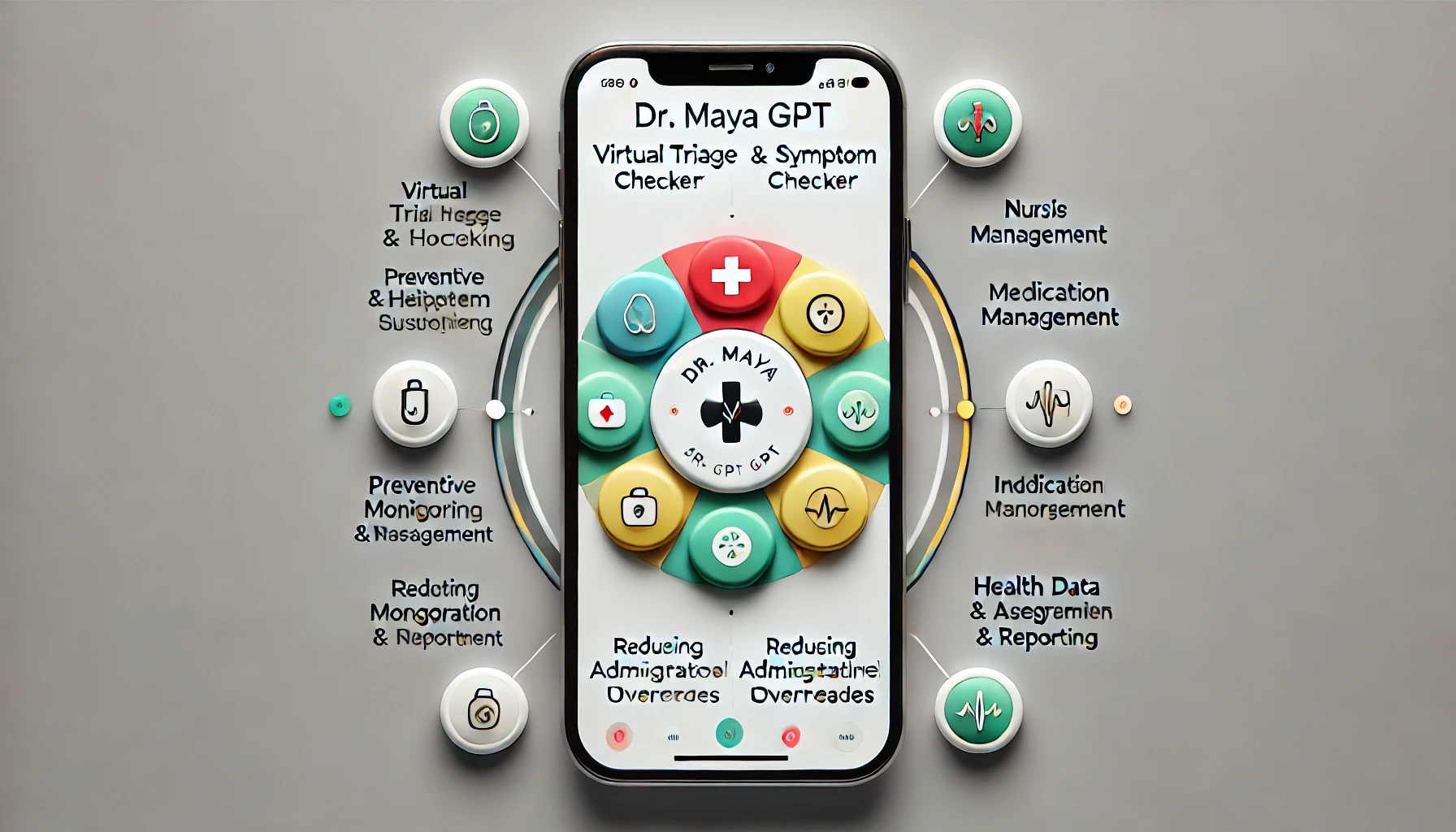Services that Dr. Maya GPT can offer is better than the current "Doctor-Centered Care model", addressing cost savings, accessibility, infection control, and efficiency while improving better healthcare delivery:
- Virtual Triage and Symptom Checker
- Preventive Health Counselling
- Remote Monitoring and Management
- Medication Management
- Mental Health Support
- Teleconsultation Assistance
- Health Education and Awareness
- AI-Driven Diagnostics in Remote Areas
- Reducing Administrative Overheads
- Infection Control via Digital Consultations
- Health Data Analysis and Reporting
- Integration with Community Healthcare Systems
1. Virtual Triage and Symptom Checker
Provides accurate, instant triage and symptom analysis, prioritizing care needs without requiring in-person consultations. Reduces the burden on doctors and staff, streamlines emergency care, and minimizes unnecessary clinic visits.
2. Preventive Health Counselling
Offers personalized lifestyle, diet, and exercise recommendations based on user data. Reduces long-term healthcare costs by preventing chronic diseases and avoiding reliance on multiple specialists.
3. Remote Monitoring and Management
Integrates with wearable devices and apps to monitor chronic conditions like diabetes or hypertension. Enables patients in remote areas to access continuous care without requiring regular doctor visits.
4. Medication Management
Guides users on medication schedules, interactions, and side effects through AI-driven analysis. Reduces the need for pharmacists or healthcare advisors, ensuring safe and cost-effective medication use.
5. Mental Health Support
Provides AI-driven mental health check-ins, stress management strategies, and crisis intervention resources. Offers scalable mental health services, particularly in underserved or remote regions, reducing the need for mental health professionals.
6. Teleconsultation Assistance
Prepares patients with relevant medical data for teleconsultations, making interactions with doctors more efficient. Cuts down consultation time, enabling doctors to handle more cases with less effort.
7. Health Education and Awareness
Simplifies medical knowledge and preventive care tips in local languages, tailored to user demographics. Empowers patients to manage their own health, reducing dependency on healthcare professionals.
8. AI-Driven Diagnostics in Remote Areas
Uses image analysis (e.g., for skin conditions, X-rays) and symptom assessment to provide preliminary diagnoses without requiring in-person evaluations. Extends healthcare access to underserved areas with limited medical infrastructure.
9. Reducing Administrative Overheads
Automates scheduling, record-keeping, and insurance claims, eliminating the need for receptionists and administrative staff. Saves costs and time, while ensuring seamless healthcare access.
10. Infection Control via Digital Consultations
Encourages digital-first interactions for non-urgent cases, reducing crowding in healthcare facilities. Minimizes the spread of infections, especially in pandemics or flu seasons.
11. Health Data Analysis and Reporting
Analyzes patient data to provide population-level insights, enabling early detection of community health trends. Supports public health initiatives in remote or underserved regions with limited resources.
12. Integration with Community Healthcare Systems
Connects with local healthcare providers and resources to guide patients to nearby services when needed. Optimizes resource allocation and reduces reliance on centralized, doctor-centric models.

